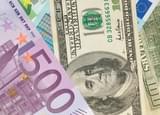Japanese Yen Futures
Japanese Yen Futures Markets
Seven currencies account for 80 percent of the Foreign Exchange Futures market and the Japanese yen is one of the largest currencies in terms of international trade trading. As Japan is one of the largest economies in the world, with one of the highest GDP among nations, it is one of the largest exporters, in dollar terms. Japanese yen futures trade in the large size and e-mini sized contracts, based in relation to the value of the world’s other largest currencies.
Bank of Japan (BoJ)
The Bank of Japan (BOJ) is the central bank behind the country’s currency and like most central banks, it is mandated to encourage economic growth and keep inflation at bay. In the past, the BOJ has pursued a policy of very low rates in the hopes of stimulating demand. Japan is also notable for inflation, or rather the near-absence of it; Japan has actually experienced deflation for much of the last decade.
Japanese Yen Futures History
The yen became the official Japanese currency in 1871. Since the Bretton Woods system collapsed and the monetary system switched to floating exchange rates, the value of the Japanese yen has similarly floated. Due to its floating exchange rate, Japanese yen futures have been considered extremely volatile. The yen is the third-most-traded currency in the world, most likely due to the fact it is so undervalued compared to the U.S. dollar and British pound.
Japanese Yen Futures Facts
Japanese yen futures allow traders to assess value against the U.S. dollar (JPY/USD), as well as the opportunity to address risk from currency fluctuations in other foreign trade markets. Currency rates are determined by a base currency quoted in relation to a different currency (JPY/USD, JPY/EUR, JPY/BHP and the like). Major currencies that are traded are floating. Central bank monetary policies can affect the value of currency.
Japanese Yen Futures Trading
- Japanese yen futures contracts first started trading at Chicago Mercantile Exchange (CME) in May 1972 as part of the International Monetary Market, a division of the Exchange. Options contracts began trading in 1986.
- Major economic data impacting yen futures trading includes: the release of GDP, retail sales, industrial production, inflation and trade balances.
- Market participants also look to the Tankan Survey, a quarterly economic report published by the Bank of Japan.
- Contract size is $12.50 for Japanese yen futures, with contract months listed six months in the March quarterly cycle (March, June, September and December).
- Japanese yen futures also trade e-mini contracts: $6.25 Japanese yen for two months in the March quarterly cycle.
Contract Specifications
| Contract Symbol | Contract Unit | Price Quotation |
| 6J | ¥12,500,000 | dollars per contract |
| Trading Exchange | Trading Hours | Tick Value |
| CME GLOBEX | 17:00 – 16:00 | 0.0000005 = $6.25 |

Yen Reaffirms Base/Reversal Count, Defines New Bull Risk Levels

Premature to Conclude Major Yen Bottom from S-T Mo Failure, But BEWARE

Euro Reaffirms Correction or Reversal, Defines New S-T Bull Risk

Canadian Dollar Re-Exposes L-T, If Intra-Range Bear

Platinum Reinforces Base/Correction/Recovery

Momentum, Waves Stem CAD Plunge

Beware Gold Plunge While $2,010.9 Caps

Gold: A Tale of Two Contracts

Another Intra-Range Directional Flip in T-Notes

British Pound Reinstates Secular Bull

Navigating T-Note Correction-vs-Reversal Ongoing Debate


